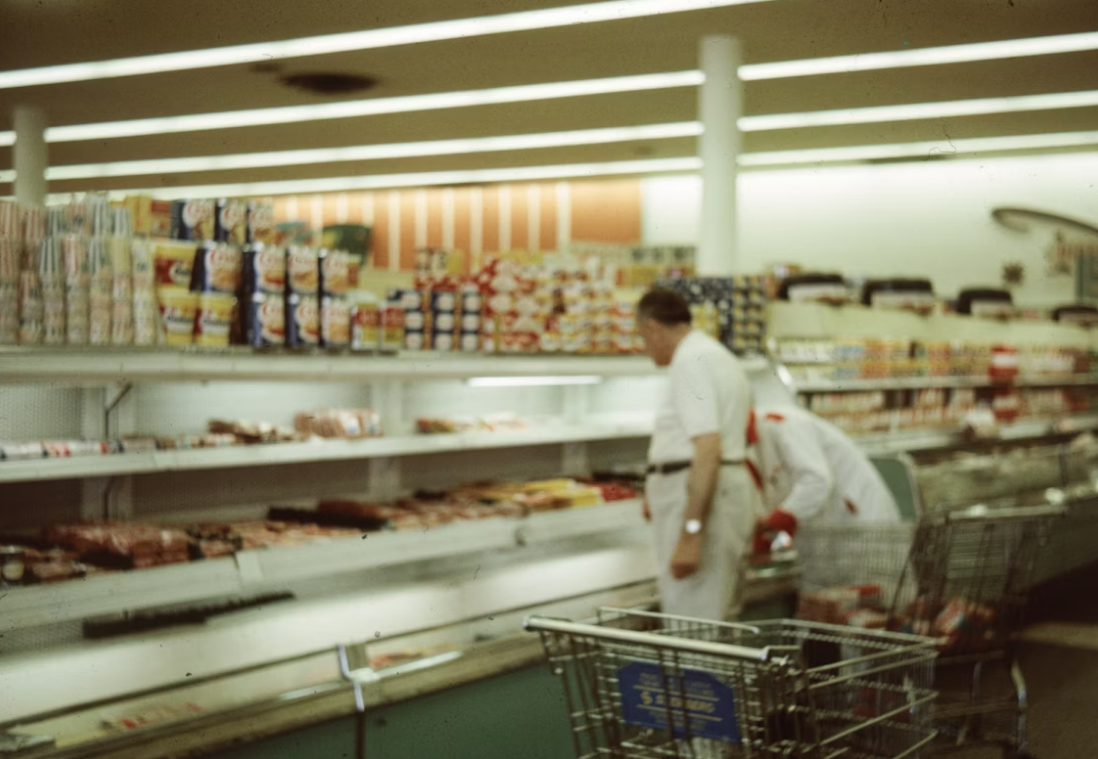
Complaints about rising grocery prices might feel like a modern issue, but they’ve echoed through generations.
Half a century ago, shoppers were already lamenting higher costs as they compared prices from decades before.
One Lancaster woman’s discovery of an old grocery receipt sparked a revealing look at how much prices had changed even back then. Her story proves that every generation has faced its own version of sticker shock.
A trip through time at the local IGA
In 1974, Lancaster resident Ellen Fleming visited Dick Bininger’s IGA on East Main Street after finding a yellowed grocery list from 1910 tucked inside a book.
The faded receipt listed prices that now sound almost unbelievable—three pounds of coffee for 63 cents, two pounds of butter for 72 cents, and a head of lettuce for just seven cents.
The entire order totaled only $2.55, a modest sum that covered several household essentials. Curious, store owner Dick Bininger decided to see what the same items would cost at his store in 1974.
From $2.55 to $10.81—and beyond
After comparing the same list using 1974 prices, Bininger’s total came to $10.81, more than four times the 1910 cost.
While it was a lighthearted experiment, it underscored how prices had steadily climbed across generations. Mrs. Fleming admitted that even in 1974, rising grocery costs felt discouraging.
Still, she remarked that “the struggle for life will never be as turbulent as in the Great Depression of the 1930s,” showing how memory often softens even the toughest economic times.
Also read: This $40 thrift store find turned out to be worth over $2,000—here’s how it happened
The story behind a familiar storefront
Many Lancaster residents remember Bininger’s grocery, which opened in 1946 on the corner of Fifth Avenue and Maple Street.
He later moved into a larger building at 518 East Main Street in 1962, describing it as “three times larger” than his first location.
After several remodels and expansions, Bininger retired in 1975, and the store continued briefly under new ownership before closing in the early 1980s.
The site eventually became Murray’s Auto Parts in 1985 and today operates as NAPA Auto Parts—a reminder of how even local landmarks evolve with time.
Also read: One ChatGPT thrift shopping secret could save retirees over $100 a month
Then and now—a challenge for readers
Half a century after that 1974 story, grocery prices have once again become a national talking point. The items Mrs. Fleming compared now cost far more than even Bininger’s “modern” total.
Her story offers both nostalgia and perspective—a reminder that while prices change, people’s resilience and humor remain the same. Shoppers today can try repeating her experiment by adding up those same grocery staples on today’s shelves to see how the numbers stack up.
Read next:
- Thrift smart: 17 secondhand finds that can save you serious cash
- From budget-friendly to pricey: Where grocery bills are highest and lowest in the US
Even though prices keep climbing, history shows we’ve always managed to make do and move forward. How much would that same 1910 grocery list cost if you filled it today? Try it at your local store and share your thoughts in the comments below.






